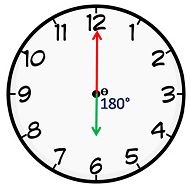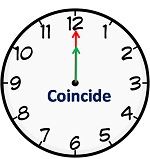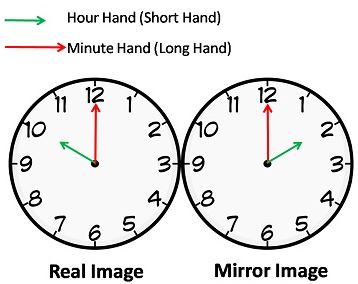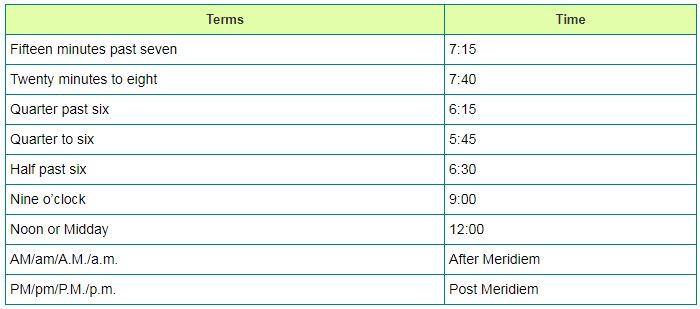The hands of the clock are in straight line when they coincide or opposite to each other for 44 times in a day.
The hands of the clock are in straight line and opposite to each other in 30 minute spaces apart (180°).

The hands of the clock are opposite to each other for 11 times in 12 hours and 22 times in a day (Because between 5, 6 and 6, 7 hands of the clock are not opposite of each other).
Between every two hours the hands of the clock coincide with each other for one time except between 11, 12 and 12, 1. In a day they coincide for 22 times.

The minute hand gains 55 minutes over hour hand per hour.
The hands overlap about every 65 minutes, not every 60 minutes.
If a watch or a clock indicates 2:20, when the correct time is 2, it is said to be 20 minutes fast.
On the other hand, if it indicates 1:40, when the correct time is 2, it is said to be 20 minutes slow.
If the real time is given and its MIRROR image is asked or vice – versa, simply subtract the given time from 11:60.
For example, the time is 10:10 in the mirror then subtracting it from 11:60 we get 1:50 which will be the mirror image of the clock.
This is a very useful and time-saving shortcut for exam and is rarely available in the books which increases its importance

A broken clock is right twice a day. However, a clock which gains or loses a few minutes might not be right twice a day or even once a day. It would be right when it had gained / lost exactly 12 hours.
General terms used in clock:
